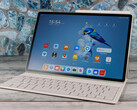Verdict - MatePad Pro presents itself as a powerful 12-incher
The Huawei MatePad Pro 12.2 (2025) turns out to be a modern tablet with a focus on both productivity and entertainment. Huawei's inclusion of a matching keyboard cover is practical. The optional stylus offers low latency due to NearLink technology and can detect over 16,000 pressure levels, making the tablet particularly appealing to creative professionals.
The display is also very accurate and can get extremely bright. Coupled with the PaperMatte surface, this makes it ideal for use on the move. This is also underscored by the battery runtimes, which are not exceptional, but still very good, lasting over 12 hours. Although the MatePad's everyday performance is good, the Kirin T92A is somewhat slower compared to the competition, primarily when its GPU is heavily utilized. Despite Wi-Fi 7 support, there is also no 6 GHz Wi-Fi on board.
Pros
Cons
Price and availability
Table of Contents
- Verdict - MatePad Pro presents itself as a powerful 12-incher
- Specifications: Huawei MatePad Pro 12.2 (2025)
- Case, features and operation - MatePad Pro 12.2 gets a little lighter
- Software and sustainability - Huawei extends its update promise
- Camera - MatePad Pro 12.2 (2025) with 50 MP sensor
- Display - Tandem OLED enables enormous brightness
- Additional measurements for the Huawei MatePad Pro 12.2 (2025)
- Notebookcheck overall rating
- Possible alternatives comparison
With the 2025 version of the MatePad Pro 12.2, Huawei is offering an upgrade, particularly in terms of performance and camera. The price of the tablet remains stable and has a recommended retail price (RRP) of 999 euros, including the keyboard cover.
Specifications: Huawei MatePad Pro 12.2 (2025)
Case, features and operation - MatePad Pro 12.2 gets a little lighter
At 5.5 mm, the Huawei MatePad Pro 12.2 (2025) is still very slim and three grams lighter than its predecessor. At 508 grams, it is comparatively light and sits comfortably in the hands. The workmanship is impressive and gives no cause for criticism.
With USB 3.2, which also supports wired image output, NearLink, and Wi-Fi 7, the equipment is at a reasonable level. Unfortunately, despite modern WLAN standards, 6 GHz WLAN is not supported. The integrated quad speakers deliver a very good sound experience.
The capacitive touchscreen responds to inputs quickly and precisely. The supplied keyboard cover (Huawei Glide Keyboard) features a stylus compartment, where the optional M-Pencil can be safely stored. Both the trackpad and the keyboard are impressive. While the former has good gliding properties, supports gestures, and works precisely, a soft but clear stroke with quiet actuation characterizes the keyboard.
For biometric security, a fingerprint sensor is integrated into the power button, offering reliable recognition rates and allowing for quick unlocking of the tablet. Face recognition via the front camera is also supported.
Software and sustainability - Huawei extends its update promise
Huawei does not offer specific details on sustainability. However, the packaging of the MatePad Pro 12.2 (2025) was found to be almost entirely plastic-free in the test.
The update support is also extended to six years (starting from the market launch date). Google apps and services are still not on board, but if you want to use them, we provide isntructions for manual installation in this article.
Camera - MatePad Pro 12.2 (2025) with 50 MP sensor
With 50 MP, the resolution of the main camera is significantly increased and delivers decent everyday shots that are well suited for documentation purposes. The additional ultra-wide angle is a nice extra, but the quality is visibly inferior. Zooming is only digital (up to 10x), and the quality offered is rather mixed.
The the front camera has a visible red tint during testing and could capture more details. However, it is adequate for video calls.
If you want to record videos, the main camera offers Ultra HD resolution at 30 FPS or 1,080p at 60 FPS. The front camera is only capable of Full HD with 30 FPS.

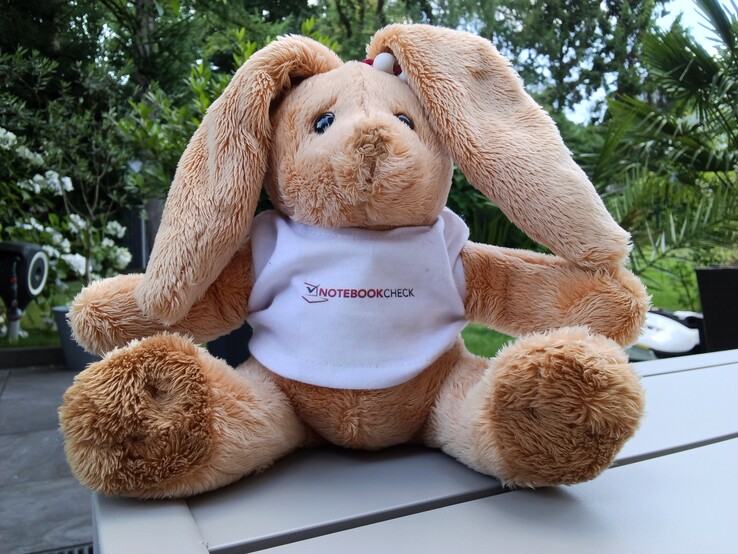

Display - Tandem OLED enables enormous brightness
The 12.2-inch tandem OLED display delivers sharp visuals, and with the PaperMatte surface, Huawei offers a paper-like coating that also has a matte finish. This provides a clear advantage outdoors.
In a pure white display and with the ambient light sensor activated, the screen is slightly brighter than on the predecessor. In the test, the Huawei tablet easily surpasses the promised 2,000 cd/m² peak brightness, achieving more than 2,200 cd/m² both with a reduced white area (APL18) and during HDR playback.
The panel is rounded off by high-frequency PWM dimming, which makes it comparatively easy on the eyes. Only the minimum brightness could have been lower.
| |||||||||||||||||||||||||
Brightness Distribution: 94 %
Center on Battery: 1036 cd/m²
Contrast: ∞:1 (Black: 0 cd/m²)
ΔE ColorChecker Calman: 1.4 | ∀{0.5-29.43 Ø4.78}
ΔE Greyscale Calman: 2.2 | ∀{0.09-98 Ø5}
99.4% sRGB (Calman 2D)
Gamma: 2.22
CCT: 6829 K
| Huawei MatePad Pro 12.2 2025 Tandem OLED, 2800x1840, 12.2" | Acer Iconia X12 AMOLED, 2560x1600, 12.6" | Apple iPad Air 13 2025 IPS, 2732x2048, 12.9" | Samsung Galaxy Tab S10+ Dynamic AMOLED 2X, 2800x1752, 12.4" | |
|---|---|---|---|---|
| Screen | -174% | -23% | -60% | |
| Brightness middle (cd/m²) | 1036 | 378 -64% | 607 -41% | 471 -55% |
| Brightness (cd/m²) | 1039 | 356 -66% | 576 -45% | 473 -54% |
| Brightness Distribution (%) | 94 | 86 -9% | 87 -7% | 97 3% |
| Black Level * (cd/m²) | 0.5 | |||
| Colorchecker dE 2000 * | 1.4 | 7.11 -408% | 1.52 -9% | 3.1 -121% |
| Colorchecker dE 2000 max. * | 2.6 | 10.75 -313% | 3.5 -35% | 5.8 -123% |
| Greyscale dE 2000 * | 2.2 | 6.3 -186% | 2.2 -0% | 2.4 -9% |
| Gamma | 2.22 99% | 2.21 100% | 2.197 100% | 2.06 107% |
| CCT | 6829 95% | 7323 89% | 6929 94% | 6746 96% |
| Contrast (:1) | 1214 |
* ... smaller is better
| Display / APL18 Peak Brightness | |
| Huawei MatePad Pro 12.2 2025 | |
| Display / HDR Peak Brightness | |
| Huawei MatePad Pro 12.2 2025 | |
Screen Flickering / PWM (Pulse-Width Modulation)
| Screen flickering / PWM detected | 120 Hz Amplitude: 17.97 % Secondary Frequency: 1428 Hz | ||
The display backlight flickers at 120 Hz (worst case, e.g., utilizing PWM) . The frequency of 120 Hz is very low, so the flickering may cause eyestrain and headaches after extended use. In comparison: 53 % of all tested devices do not use PWM to dim the display. If PWM was detected, an average of 8111 (minimum: 5 - maximum: 343500) Hz was measured. | |||
Display Response Times
| ↔ Response Time Black to White | ||
|---|---|---|
| 1.41 ms ... rise ↗ and fall ↘ combined | ↗ 0.719 ms rise | |
| ↘ 0.6905 ms fall | ||
| The screen shows very fast response rates in our tests and should be very well suited for fast-paced gaming. In comparison, all tested devices range from 0.1 (minimum) to 240 (maximum) ms. » 7 % of all devices are better. This means that the measured response time is better than the average of all tested devices (20.2 ms). | ||
| ↔ Response Time 50% Grey to 80% Grey | ||
| 0.79 ms ... rise ↗ and fall ↘ combined | ↗ 0.44 ms rise | |
| ↘ 0.351 ms fall | ||
| The screen shows very fast response rates in our tests and should be very well suited for fast-paced gaming. In comparison, all tested devices range from 0.165 (minimum) to 636 (maximum) ms. » 2 % of all devices are better. This means that the measured response time is better than the average of all tested devices (31.6 ms). | ||
Additional measurements for the Huawei MatePad Pro 12.2 (2025)
| Networking | |
| Huawei MatePad Pro 12.2 2025 | |
| iperf3 transmit AXE11000 | |
| iperf3 receive AXE11000 | |
| Acer Iconia X12 | |
| iperf3 transmit AXE11000 | |
| iperf3 receive AXE11000 | |
| Apple iPad Air 13 2025 | |
| iperf3 transmit AXE11000 6GHz | |
| iperf3 receive AXE11000 6GHz | |
| Samsung Galaxy Tab S10+ | |
| iperf3 transmit AXE11000 | |
| iperf3 receive AXE11000 | |
| iperf3 transmit AXE11000 6GHz | |
| iperf3 receive AXE11000 6GHz | |
| Average 802.11 a/b/g/n/ac/ax/be | |
| iperf3 transmit AXE11000 | |
| iperf3 receive AXE11000 | |
| iperf3 transmit AXE11000 6GHz | |
| iperf3 receive AXE11000 6GHz | |
| Average of class Tablet | |
| iperf3 transmit AXE11000 | |
| iperf3 receive AXE11000 | |
| iperf3 transmit AXE11000 6GHz | |
| iperf3 receive AXE11000 6GHz | |
| Geekbench AI | |
| Single Precision TensorFlow NNAPI 1.2 | |
| Average of class Tablet (85 - 1140, n=15, last 2 years) | |
| Average HiSilicon Kirin T92 (386 - 402, n=2) | |
| Huawei MatePad Pro 12.2 2025 | |
| Half Precision TensorFlow NNAPI 1.2 | |
| Average of class Tablet (84 - 4545, n=15, last 2 years) | |
| Average HiSilicon Kirin T92 (387 - 404, n=2) | |
| Huawei MatePad Pro 12.2 2025 | |
| Quantized TensorFlow NNAPI 1.2 | |
| Average of class Tablet (130 - 4532, n=15, last 2 years) | |
| Average HiSilicon Kirin T92 (801 - 831, n=2) | |
| Huawei MatePad Pro 12.2 2025 | |
| Jetstream 2 - 2.0 Total Score | |
| Apple iPad Air 13 2025 (Safari 18) | |
| Huawei MatePad Pro 12.2 2025 (Chrome 137, Performance Mode) | |
| Huawei MatePad Pro 12.2 2025 (Chrome 137) | |
| Samsung Galaxy Tab S10+ (Chrome 130) | |
| Average HiSilicon Kirin T92 (129.8 - 194.5, n=4) | |
| Average of class Tablet (22.3 - 395, n=67, last 2 years) | |
| Huawei MatePad Pro 12.2 2025 | Samsung Galaxy Tab S10+ | Average 512 GB UFS 3.1 Flash | Average of class Tablet | |
|---|---|---|---|---|
| AndroBench 3-5 | -22% | -28% | -35% | |
| Sequential Read 256KB (MB/s) | 2110.35 | 3574.3 69% | 1872 ? -11% | 1786 ? -15% |
| Sequential Write 256KB (MB/s) | 1988.5 | 554.67 -72% | 1324 ? -33% | 1334 ? -33% |
| Random Read 4KB (MB/s) | 340.83 | 218.43 -36% | 288 ? -16% | 244 ? -28% |
| Random Write 4KB (MB/s) | 745.32 | 374.09 -50% | 355 ? -52% | 278 ? -63% |
(+) The maximum temperature on the upper side is 37.1 °C / 99 F, compared to the average of 33.7 °C / 93 F, ranging from 20.7 to 53.2 °C for the class Tablet.
(+) The bottom heats up to a maximum of 38.5 °C / 101 F, compared to the average of 33.2 °C / 92 F
(+) In idle usage, the average temperature for the upper side is 28.2 °C / 83 F, compared to the device average of 30 °C / 86 F.
3DMark Steel Nomad Stress Test
| 3DMark | |
| Wild Life Stress Test Stability | |
| Acer Iconia X12 | |
| Huawei MatePad Pro 12.2 2025 | |
| Samsung Galaxy Tab S10+ | |
| Steel Nomad Light Stress Test Stability | |
| Acer Iconia X12 | |
| Huawei MatePad Pro 12.2 2025 | |
| Apple iPad Air 13 2025 | |
| Samsung Galaxy Tab S10+ | |
Huawei MatePad Pro 12.2 2025 audio analysis
(+) | speakers can play relatively loud (86.5 dB)
Bass 100 - 315 Hz
(±) | reduced bass - on average 11.3% lower than median
(±) | linearity of bass is average (8.5% delta to prev. frequency)
Mids 400 - 2000 Hz
(+) | balanced mids - only 3.1% away from median
(+) | mids are linear (3.8% delta to prev. frequency)
Highs 2 - 16 kHz
(+) | balanced highs - only 2.3% away from median
(+) | highs are linear (3.9% delta to prev. frequency)
Overall 100 - 16.000 Hz
(+) | overall sound is linear (9.6% difference to median)
Compared to same class
» 4% of all tested devices in this class were better, 3% similar, 93% worse
» The best had a delta of 7%, average was 20%, worst was 129%
Compared to all devices tested
» 3% of all tested devices were better, 1% similar, 96% worse
» The best had a delta of 4%, average was 24%, worst was 134%
Apple iPad Air 13 2025 audio analysis
(±) | speaker loudness is average but good (77.7 dB)
Bass 100 - 315 Hz
(±) | reduced bass - on average 5.3% lower than median
(±) | linearity of bass is average (13.6% delta to prev. frequency)
Mids 400 - 2000 Hz
(+) | balanced mids - only 3.8% away from median
(+) | mids are linear (6% delta to prev. frequency)
Highs 2 - 16 kHz
(+) | balanced highs - only 2.5% away from median
(±) | linearity of highs is average (7.5% delta to prev. frequency)
Overall 100 - 16.000 Hz
(+) | overall sound is linear (10.7% difference to median)
Compared to same class
» 8% of all tested devices in this class were better, 4% similar, 87% worse
» The best had a delta of 7%, average was 20%, worst was 129%
Compared to all devices tested
» 5% of all tested devices were better, 2% similar, 93% worse
» The best had a delta of 4%, average was 24%, worst was 134%
| Battery runtime - WiFi v1.3 | |
| Huawei MatePad Pro 12.2 2025 | |
| Acer Iconia X12 | |
| Apple iPad Air 13 2025 | |
| Samsung Galaxy Tab S10+ | |
Notebookcheck overall rating
The Huawei MatePad Pro 12.2 (2025) impresses with a six-year update guarantee, a 50-megapixel main camera with solid picture quality, and a front camera that is sufficient for video calls. The brilliant 12.2-inch tandem OLED display achieves a brightness of over 2,200 cd/m², offers a matte surface, and is easy on the eyes thanks to high-frequency PWM dimming.
Huawei MatePad Pro 12.2 2025
- 07/15/2025 v8
Daniel Schmidt
Possible alternatives comparison
Image | Model / Review | Price | Weight | Drive | Display |
|---|---|---|---|---|---|
| Huawei MatePad Pro 12.2 2025 HiSilicon Kirin T92 ⎘ HiSilicon Maleoon 920 ⎘ 12 GB Memory, 512 GB | Amazon: 1. $16.89 WUNIAK Screen Protector for ... 2. $33.99 BLCshine 360° Magnetic Priv... 3. $22.65 Case Compatible with Huawei ... List Price: 999€ | 508 g | 512 GB UFS 3.1 Flash | 12.20" 2800x1840 275 PPI Tandem OLED | |
| Acer Iconia X12 Mediatek Helio G99 ⎘ ARM Mali-G57 MP2 ⎘ 8 GB Memory, 256 GB eMMC | Amazon: 1. $12.98 Oshmirian 【2Pack】 Screen... 2. $13.99 KONXISA 2-Pack Screen Protec... 3. $9.97 KONXISA 1-Pack Screen Protec... List Price: 419€ | 600 g | 256 GB eMMC 5.1 Flash | 12.60" 2560x1600 240 PPI AMOLED | |
| Apple iPad Air 13 2025 Apple M3 ⎘ Apple M3 9-Core GPU ⎘ 8 GB Memory, 128 GB NVMe | Amazon: $699.00 List Price: 949€ | 616 g | 128 GB NVMe | 12.90" 2732x2048 265 PPI IPS | |
| Samsung Galaxy Tab S10+ MediaTek Dimensity 9300+ ⎘ ARM Immortalis-G720 MP12 ⎘ 12 GB Memory, 256 GB | Amazon: 1. $779.99 Samsung Galaxy Tab S10+ Plus... 2. $749.99 Samsung Galaxy Tab S10+ Plus... 3. $469.99 Samsung Galaxy Tab S10 FE 25... List Price: 1119€ | 571 g | 256 GB UFS 4.0 Flash | 12.40" 2800x1752 266 PPI Dynamic AMOLED 2X |
Transparency
The selection of devices to be reviewed is made by our editorial team. The test sample was provided to the author as a loan by the manufacturer or retailer for the purpose of this review. The lender had no influence on this review, nor did the manufacturer receive a copy of this review before publication. There was no obligation to publish this review. As an independent media company, Notebookcheck is not subjected to the authority of manufacturers, retailers or publishers.
This is how Notebookcheck is testing
Every year, Notebookcheck independently reviews hundreds of laptops and smartphones using standardized procedures to ensure that all results are comparable. We have continuously developed our test methods for around 20 years and set industry standards in the process. In our test labs, high-quality measuring equipment is utilized by experienced technicians and editors. These tests involve a multi-stage validation process. Our complex rating system is based on hundreds of well-founded measurements and benchmarks, which maintains objectivity. Further information on our test methods can be found here.




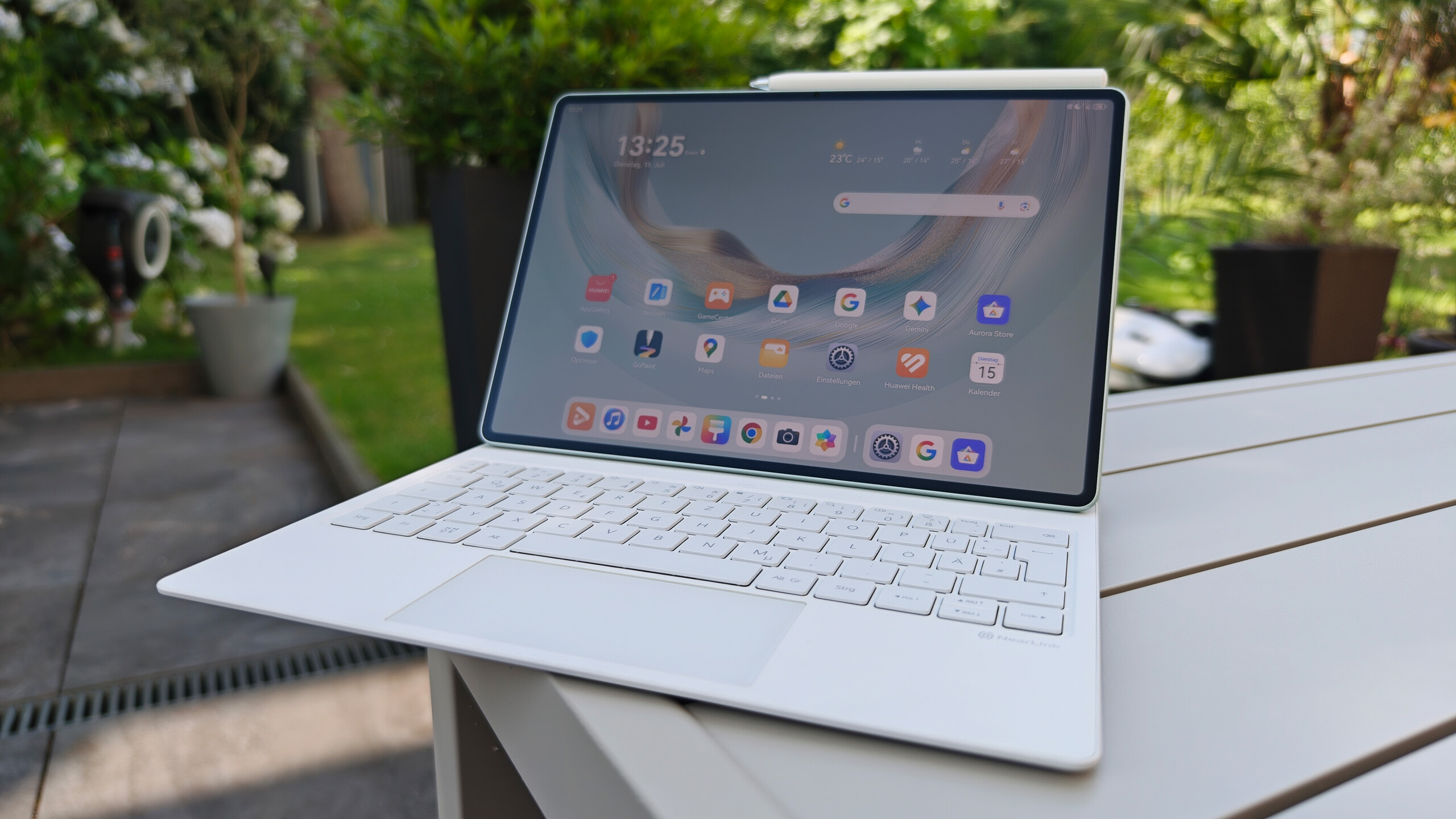

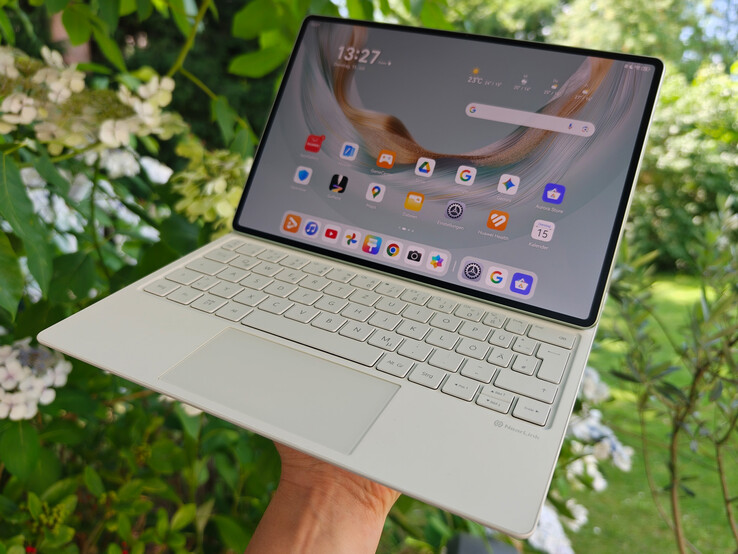









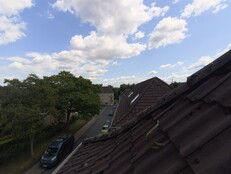



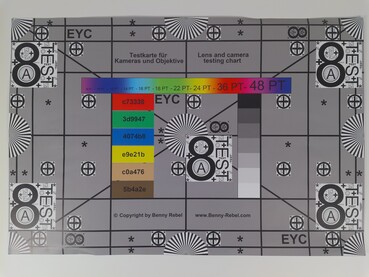


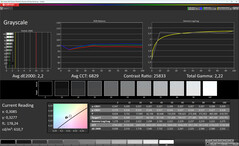

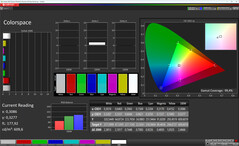
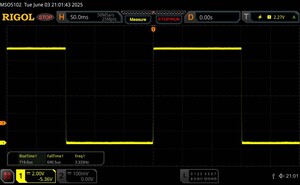


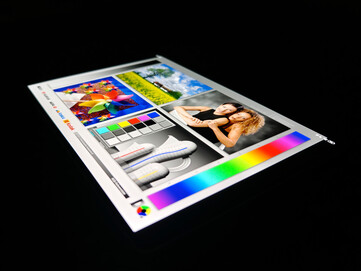
 Total Sustainability Score:
Total Sustainability Score: 


